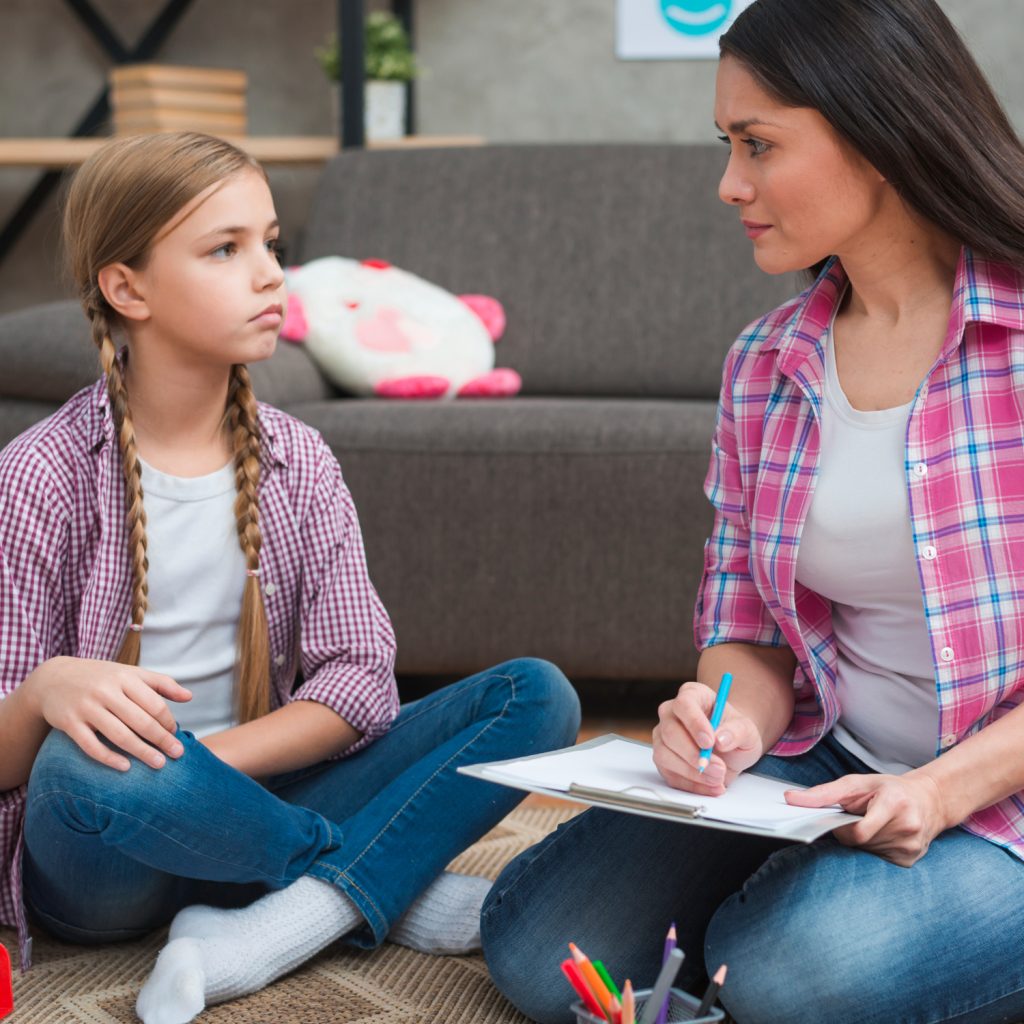Discover a comprehensive step-by-step guide to effectively teach problem-solving skills to 11-12 year olds.
Teaching Problem-Solving to 11-12 Year Olds: A Step-by-Step Guide
Are you ready to embark on an exciting journey to develop problem-solving skills in 11-12 year olds? Buckle up and get ready, because we’re about to dive into the wonderful world of solving problems! In this step-by-step guide, we’ll explore the importance of problem-solving skills, discuss strategies for teaching problem-solving, and address common challenges you may encounter along the way. Let’s get started!

Understanding the Importance of Problem-Solving Skills
Problem-solving is like a superpower – it empowers children to overcome obstacles, think critically, and approach challenges with confidence. By developing problem-solving skills, children enhance their cognitive abilities and become better equipped to navigate through life’s maze of dilemmas.
But why is problem-solving crucial for 11-12 year olds, you may ask? Well, this particular age marks a significant milestone in their cognitive development. At this stage, their brains are like sponges, eager to soak up new information and acquire vital life skills. It’s the perfect time to nurture their problem-solving abilities and set them up for success.
During the pre-adolescent years, children experience rapid growth and development in various aspects of their lives. Their bodies are changing, their social circles are expanding, and their academic demands are increasing. In this whirlwind of transformations, problem-solving skills act as a guiding compass, helping them navigate the complexities of their ever-evolving world.
One of the key reasons problem-solving is crucial for 11-12 year olds is that it fosters resilience. As children encounter different challenges, they learn to adapt, persevere, and find creative solutions. These skills not only enable them to overcome immediate obstacles but also instill in them a sense of resilience that will serve them well throughout their lives.
Furthermore, problem-solving skills enhance critical thinking abilities. By engaging in problem-solving activities, children learn to analyze situations, evaluate options, and make informed decisions. This cognitive process strengthens their ability to think critically, enabling them to approach complex problems with a logical and analytical mindset.
Another benefit of developing problem-solving skills at this age is the positive impact it has on their self-confidence. As children successfully solve problems, they gain a sense of accomplishment and belief in their abilities. This newfound confidence spills over into other areas of their lives, empowering them to take on new challenges and tackle them head-on.
Moreover, problem-solving skills are not limited to academic success alone. They have a profound impact on interpersonal relationships as well. When children possess strong problem-solving abilities, they are better equipped to resolve conflicts, communicate effectively, and collaborate with others. These skills lay the foundation for healthy and positive relationships, both in their personal and professional lives.
As parents, educators, and mentors, it is our responsibility to provide ample opportunities for children to develop and hone their problem-solving skills. Engaging them in puzzles, games, and real-life scenarios that require critical thinking and creative problem-solving will nurture their abilities and set them on a path towards success.
So, let us embrace the importance of problem-solving skills for 11-12 year olds and create an environment that encourages their growth. By doing so, we empower them to become resilient, critical thinkers who are ready to face any challenge that comes their way.
The Basics of Teaching Problem-Solving
The first step in teaching problem-solving is to help children identify a problem. This can be done by engaging them in discussions about their daily lives and the challenges they face. By encouraging them to reflect on their experiences, they can begin to recognize areas where they may need to find solutions.
Once a problem has been identified, the next step is to foster creative thinking and encourage brainstorming. Brainstorming is a technique that allows children to generate a wide range of ideas without judgment. It is important to create a safe and supportive environment where children feel comfortable expressing their thoughts and ideas.
During the brainstorming process, it is crucial to remind children that there are no wrong answers. This helps them understand that their ideas are valuable and encourages them to think outside the box. By exploring different angles and considering various perspectives, children can develop a broader understanding of the problem and potential solutions.
As children engage in brainstorming, it is important to guide them in exploring innovative ideas. Encourage them to challenge conventional thinking and explore unconventional solutions. By embracing their imagination, children can tap into their creative potential and develop unique approaches to problem-solving.
Furthermore, it is essential to emphasize the importance of collaboration during the problem-solving process. Encourage children to work together, share their ideas, and build upon each other’s suggestions. Collaboration not only enhances the quality of ideas but also promotes teamwork and communication skills.
Throughout the problem-solving journey, it is crucial to provide ongoing support and guidance. As children generate ideas, help them evaluate the feasibility and effectiveness of each solution. This critical thinking process allows children to develop a deeper understanding of the problem and refine their ideas accordingly.
Lastly, encourage children to test their ideas and implement their solutions. This hands-on approach allows them to experience the outcomes of their problem-solving efforts and learn from the results. It is important to celebrate their successes and provide constructive feedback to help them grow and improve their problem-solving skills.
Strategies for Teaching Problem-Solving
Incorporating problem-solving into everyday learning is a great way to make it engaging and relatable. Create real-life scenarios that children can relate to and encourage them to brainstorm possible solutions. This will help them see the relevance of problem-solving in their own lives.
For example, imagine a scenario where a group of friends is planning a picnic in the park. Ask the children to think about the various challenges they might encounter during the picnic, such as bad weather or forgetting to bring certain items. Encourage them to come up with creative solutions to these potential problems, like bringing a backup plan for indoor activities in case of rain or creating a checklist to ensure all necessary items are packed.
Another effective approach is using games and puzzles to enhance problem-solving skills. From crossword puzzles to riddles, there are countless fun activities that can stimulate their thinking and make problem-solving an enjoyable adventure.
For instance, you can introduce the children to a challenging crossword puzzle that requires them to think critically and find the right words to fit the given clues. This not only helps them develop problem-solving skills but also improves their vocabulary and general knowledge.
In addition to traditional puzzles, you can also incorporate interactive games that require problem-solving. For example, you can set up a treasure hunt where the children have to follow a series of clues to find a hidden treasure. This activity not only encourages critical thinking but also promotes teamwork and collaboration as the children work together to solve the puzzles and reach the final goal.
Furthermore, you can introduce the children to logic puzzles that challenge their reasoning abilities. These puzzles often involve a set of clues and require the children to use deductive reasoning to determine the correct solution. By engaging in these types of activities, children develop their analytical thinking skills and learn to approach problems from different angles.
Overall, incorporating problem-solving into everyday learning through real-life scenarios and engaging activities is a powerful way to help children develop essential skills. By encouraging them to think critically, analyze situations, and come up with creative solutions, you are equipping them with the tools they need to navigate challenges and succeed in various aspects of life.
Overcoming Challenges in Teaching Problem-Solving

While learning problem-solving skills can be exciting, you may encounter some resistance along the way. Some children might find it uncomfortable to step out of their comfort zones and embrace the unknown. Be patient and provide a supportive environment that encourages risk-taking and exploration. Remember, it’s all part of the learning process!
Addressing common misconceptions about problem-solving is also crucial. Some children may believe that problem-solving is only for “smart” kids or that there’s only one correct solution. Emphasize that problem-solving is a skill everyone can develop and that there are often multiple ways to solve a problem.
One effective strategy for teaching problem-solving is to incorporate real-life scenarios into the learning process. By presenting students with practical problems that they may encounter in their daily lives, you can help them see the relevance and importance of problem-solving skills. For example, you could create a hypothetical situation where students have to figure out how to divide limited resources among a group of people. This not only engages their critical thinking abilities but also helps them understand the value of problem-solving in real-world situations.
Another challenge in teaching problem-solving is fostering a growth mindset in students. Many children may believe that their abilities are fixed and that they either have problem-solving skills or they don’t. It’s important to debunk this misconception and encourage students to believe in their ability to learn and improve. By highlighting examples of individuals who have overcome challenges through problem-solving, such as inventors or scientists, you can inspire students to adopt a growth mindset and embrace the process of learning and problem-solving.
Collaborative problem-solving activities can also be highly beneficial in overcoming challenges in teaching problem-solving. By encouraging students to work together in groups or pairs, you create an environment where they can learn from each other’s perspectives and approaches. This not only enhances their problem-solving skills but also fosters teamwork and communication abilities. You can assign group projects that require students to brainstorm ideas, analyze different solutions, and come up with a collective decision. This way, they learn to value diverse perspectives and understand the importance of collaboration in problem-solving.
Furthermore, providing students with ample opportunities to practice problem-solving is essential. Incorporate regular problem-solving exercises into your curriculum and encourage students to apply their skills in various contexts. This could involve solving puzzles, engaging in role-playing activities, or participating in hands-on projects. By consistently practicing problem-solving, students can develop their abilities and become more confident in their problem-solving skills.
Lastly, it’s crucial to celebrate and acknowledge students’ efforts and progress in problem-solving. Recognize their achievements, no matter how small, and provide constructive feedback to help them improve. This positive reinforcement not only boosts their confidence but also motivates them to continue developing their problem-solving skills.
Evaluating Progress and Success
Assessing improvement in problem-solving skills is essential to track progress. Observe how children approach challenges and provide constructive feedback to help them continue growing. Celebrate their successes, no matter how small, to keep them motivated and eager to improve.
Remember, teaching problem-solving is not a one-size-fits-all process. Each child is unique, and it’s important to adapt your approach to suit their individual needs and learning styles. With patience, creativity, and a sprinkle of fun, you’ll be empowering 11-12 year olds with invaluable problem-solving skills that will serve them well throughout their lives. Happy problem-solving!



